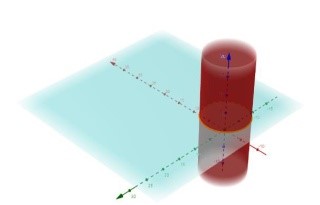GeoGebra: Implementation in mathematics for design.
##plugins.themes.bootstrap3.article.main##
Abstract
The use of Information and Communication Technologies is unquestionable, they are part of the technological culture that surrounds us and with which we must coexist and apply properly. In the teaching-learning process of Mathematics it contributes to complement, enrich and transform it, favoring both the teacher in his activity as a guide to the teaching process, and the students in the search for new knowledge and connections with other branches of knowledge.
Among the various tools that can be used to support the teaching of mathematics is GeoGebra, free software that offers the possibility of associating geometric and algebraic objects to solve complex problems, relating both areas of knowledge.
In the university teaching of Design, the interactions between this software and Mathematics are evident. This article illustrates the experience of using GeoGebra in the teaching-learning process of this science in the training of designers in Cuba.
##plugins.themes.bootstrap3.article.details##

This work is licensed under a Creative Commons Attribution-NonCommercial-ShareAlike 4.0 International License.
- Attribution — You must give appropriate credit , provide a link to the license, and indicate if changes were made . You may do so in any reasonable manner, but not in any way that suggests the licensor endorses you or your use.
- NonCommercial — You may not use the material for commercial purposes .
- No additional restrictions — You may not apply legal terms or technological measures that legally restrict others from doing anything the license permits.
- ShareAlike — If you remix, transform, or build upon the material, you must distribute your contribution under the same license as the original. NOTE: This point applies to numbers 1 to 20 of the magazine with the previous CC-BY-NC-SA 4.0 license. Does not apply to the new CC BY-NC 4.0 license from Volume 11, Number. 21 (2024).
References
Arteaga, E., Medina, J. F., & del Sol Martínez. (2019). El Geogebra: una herramienta tecnológica para aprender matemática en la Secundaria Básica haciendo matemática. Conrado, 15(70), 102-108. Epub 02 de diciembre de 2019. Recuperado en 15 de diciembre de 2020, de http://scielo.sld.cu/scielo.php?script=sci_arttext&pid=51990-86442019000500102&Ing=es&tlng=es
Artigue, M.(2011).Tecnología y enseñanza de las matemáticas: desarrollo y aportes de la aproximación instrumental. Cuadernos de Investigación y Formación en Educación Matemática, 6(8), 13-33. Disponible en http://revistas.ucr.ac.cr/Ruiz, https://reunir.unir.net/bitstream/handle/123456789/.../Juan_Portilla_Ciriquian.pdf, Visitada 3 de mayo2019
González, J. V., Gutiérrez, R. D., & Sandoval, M. (2017). Desarrollo didáctico con GeoGebra como herramienta para la enseñanza en aplicaciones de mecanismos y diseño de maquinaria dentro de la ingeniería. XXIII Congreso Internacional Anual de la SOMIM. Cuernavaca, Morelos, México. Recuperado de: http://revistasomim.net/congreso2017/articulos/A5_175.pdf [ Links ]
M.; Ávila, P.; Villa-Ochoa, J. (2013). Uso de GeoGebra como herramienta didáctica dentro del aula de matemáticas. En Córdoba, Francisco; Cardeño, Jorge (Eds.), Desarrollo y uso didáctico de GeoGebra. Conferencia
Serrano, L. (2013). La modelización matemática en los estudios universitarios de economía y empresa: análisis ecológico y propuesta didáctica. Tesis doctoral. Universitat RamonLlull.






















